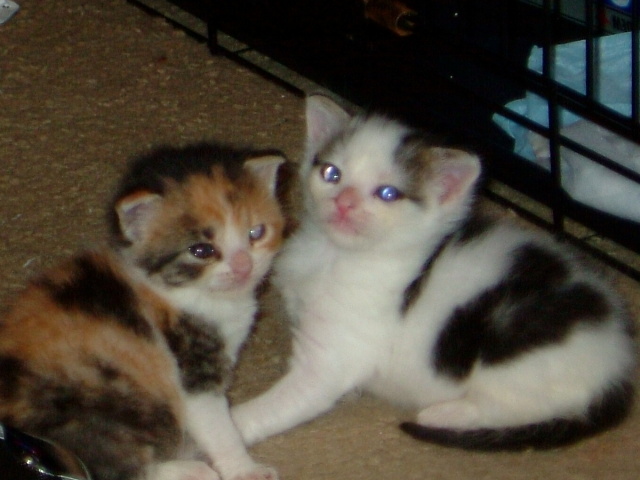Questioni have an eight year old girl who came from a shelter. she's been with me for five years and is still a bit sketcky at times but majority of the time she's affectionate and loving...i got a young boy a year ago and she and he don't really get along, they keep to their sides of the house...i'm thinking of getting a kitten to keep my girl active since my initial plan getting the boy didn't go as i had hoped...my questions are:
1)do older cats take to kittens better than semi grown cats?
2)would it be better to get a female or male kitten?
3)could cats die from lonelieness, stress or jealousy?
thanks so much
AnswerChrys,
First, I will answer your questions.
(1) Yes, older cats do take to kittens better than semi grown cats.
(2) As long as the kitten is to be neutered or spayed (by 4 months, if possible), it does not matter if it is male or female.
(3) Cats are known to get separation anxiety disorder and grieve for human owners and other buddies when they are gone. However, it would be very rare, indeed, for a cat to die of loneliness. Jealousy can be a problems and can cause stress. Stress can affect the immune system, thus to some extent jealousy can have an affect on the well being of the cat (albeit, probably not very marked). High stress will affect the immune system and could cause health problems.
One caveat, is that there is still no gauarntee the established spay will like the new kitten. It is just as likely that the semi grown cat and the kitten will hit it off as would the established 8 year old spay and the kitten. It is also possible none of them will get along. Like people, some cats take a dislike to each other for no apparent reason. This is always a possibility.
Anyway, I will give you a method we use for introducing a new cat into a household with established pets:
Start out your new cat or kitten in one room with a litter pan and water dish. Ideally, the one room should be a bedroom with yourself or another human resident. This accomplishes a couple of things. Your new cat or kitten will not be overwhelmed by its new surroundings and get "lost", and thusly will have no problem finding the litter pan (often kittens or rescue cats have been confined and are somewhat daunted by wide open spaces!). You will feed the new cat or kitten in this room and keep the established cats out. It allows the new cat or kitten to bond with you or another human being and also build up some self assurance in its new surroundings since it will not have to compete for food or attention right away. Finally, it allows the new cat or kitten and the established cat to sniff each other under the door and get familiar with each others' scents.
After 3-5 days of being in its one room, it is time to let them meet each other. Be prepared for some posturing, some spitting and hissing, and the like. IGNORE IT! After a while, they should begin chasing each other about and still have the occasional hiss or spit as they get acustomed to
each other. Cats tend to make a whole lot of noise and even loosen up some fur. Rarely will two cats hurt each other.
Once they are introduced, there are a couple of things you must remember. Do not separate them again, they will get along! Do not interfere in their "discussions" as they need to sort it out amongst themselves!
It does not hurt to give the established cats treats and extra attention after the new cat or kitten is introduced (yes, cats do get jealous!).
A couple of things you may have to do are to feed them on separate dishes. Provide more than one litter pan in different areas of the household (as cats can be very territorial about litter pans).
All, in all, this method seems to have had great success in the past and makes for a fairly smooth introduction. Please remember that they may make up immediately, or it may take a few weeks.
I hope it all works out for you.
Best regards... Norm.

 18 yr old male cat
Question
Simon at 13 years
My cat is 18 years ol
18 yr old male cat
Question
Simon at 13 years
My cat is 18 years ol
 Trimming (crazy) Kittens Claws
Question
tigerlily
I need to trim my kittens nai
Trimming (crazy) Kittens Claws
Question
tigerlily
I need to trim my kittens nai
 Persian Male Behavioral Issues.
Question
Jimmy
Dear Karen
Hope you are fine. I
Persian Male Behavioral Issues.
Question
Jimmy
Dear Karen
Hope you are fine. I
 2 Ferals
Question
Sister and Brother at
Hello!
Im so glad I fo
2 Ferals
Question
Sister and Brother at
Hello!
Im so glad I fo
 Persian Male peeing outside of litter box
Question
Bambam
I have a 2 year old Male persian who ur
Persian Male peeing outside of litter box
Question
Bambam
I have a 2 year old Male persian who ur